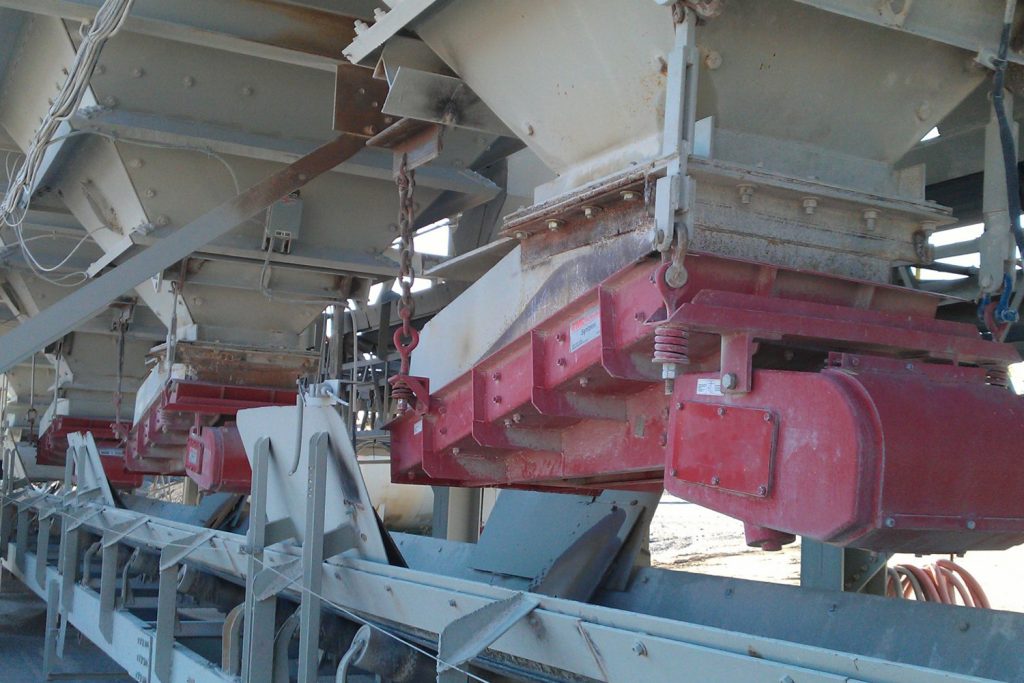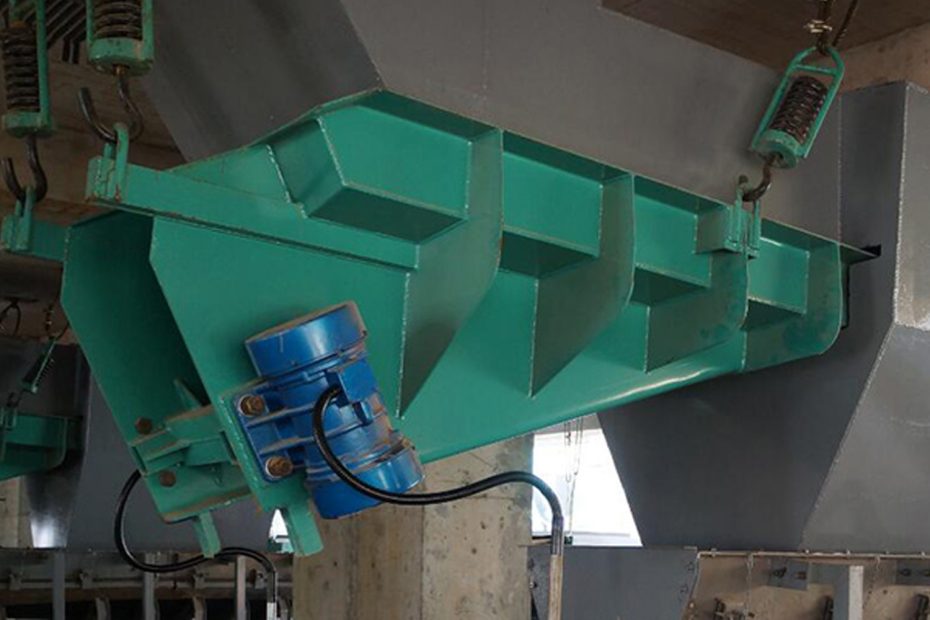Vibrating feeder, also known as vibrating feeder, refers to a device that can feed lumpy and granular materials from the storage bin to the material receiving device evenly, regularly and continuously.
The electromagnetic vibrating feeder is mainly driven by an electromagnetic exciter to transport materials evenly, quantitatively and continuously. The core structure of the electromagnetic vibrating feeder is the feed trough and the electromagnetic exciter. Compared with the motor-driven vibrating feeder, the electromagnetic-driven vibrating feeder contains fewer moving parts and uses the magnetic force provided by the electromagnet. The pulse causes the tank to vibrate.
The electromagnetic vibrating feeder can instantly change and open and close the material flow, so the feeding amount has high accuracy, and can realize centralized control and automatic control of the production process; and the equipment uses a trough made of alloy steel plates, which can Suitable for conveying high temperature, severe wear and corrosive materials.
The feeding amount of the electromagnetic vibrating feeder is achieved by changing the voltage across the coil. Under normal working conditions of the vibrating feeder, adjust the amplitude. When the potentiometer is turned to a large value, neither the amplitude nor the current reaches the rated value. Especially if the current is very small, you need to open the electromagnetic vibration control box and check whether the upper sliding arm of the resistor is If it is loose, if the amplitude and current still do not reach the rated value after tightening, the resistance needs to be adjusted to achieve the maximum amplitude and rated current.
The automatic feeding of the vibrating feeder is achieved by changing the current of the main motor and whether the fan is normal or not. When the fan is running normally, when the main motor current exceeds the rated current, it is required to stop feeding, and when it drops, it is required to continue feeding. Automatic feeding uses the change in the main motor current to realize the control voltage of the thyristor through the action of the current relay. On and off, to achieve the purpose of feeding or not.

Key points for overall adjustment of electromagnetic vibrating feeder
- Adjustment of the air gap: The gap between the iron core and the armature directly affects the normal operation of the electromagnetic vibrating feeder. Under normal circumstances, the gap between the iron core and the armature should be 1.8~2.0 mm. An air gap that is too large will reduce the amplitude and increase current and power consumption; an air gap that is too small will cause the armature to collide with the core and damage components. It is necessary to regularly check the size of the air gap and adjust it appropriately.
- Elastic system tuning: In order to maintain stable operation and high efficiency, the electromagnetic vibrating feeder should be adjusted to work in the sub-resonance zone. Tuning methods include adjusting spring stiffness, changing part of the mass, etc. Ensure that the feeder is in a critical state so that it can work stably and with high efficiency.
- Adjustment of the feeding amount: The feeding amount can be adjusted by adjusting the amplitude, vibration frequency and opening of the silo gate. Note that electromagnetic vibrating feeders generally use small amplitudes to avoid adverse consequences. Adjusting the opening of the silo gate can change the thickness of the material layer, thereby adjusting the feeding amount.
Conclusion
The electromagnetic vibrating feeder is a new type of feeding equipment. The equipment is small in size, light in weight, simple in structure, easy to install, has no rotating parts, does not require lubrication, and is easy to maintain.
